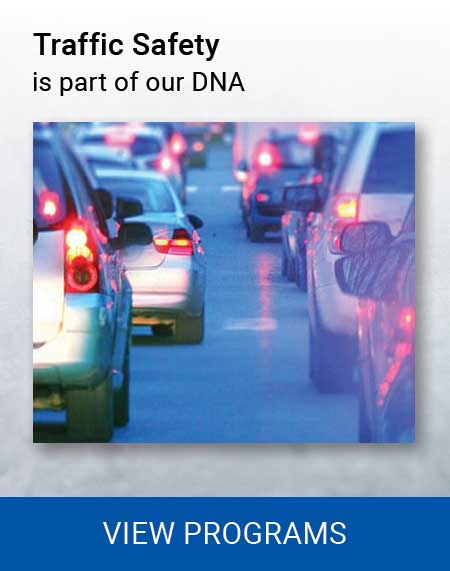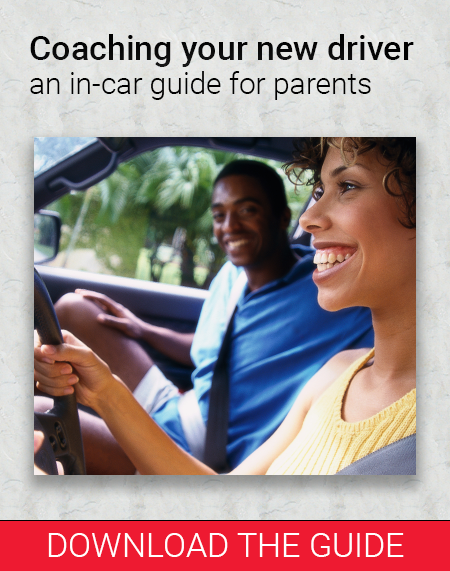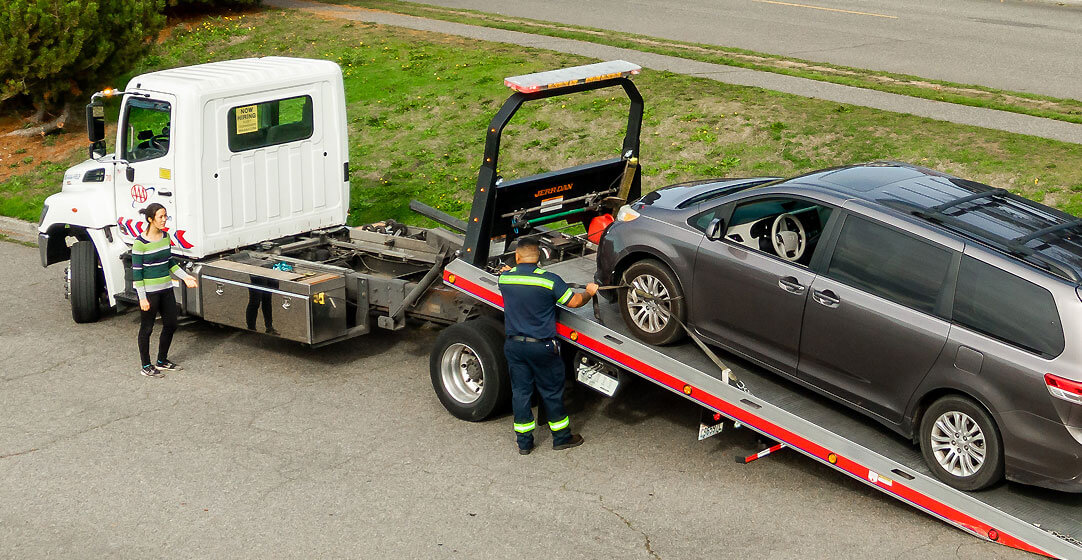Before you head out, visit WSDOT’s website for the latest road conditions in Washington.
Wet-Weather Driving
The art of safe driving in adverse weather, which we have a lot of in the Pacific Northwest, requires preparation and training. Start with a vehicle that’s ready for the rainy season and add skilled wet-weather driving techniques. Follow these tips the next time you get caught driving in the rain.
Safety first
Always drive distraction-free and keep an emergency driving kit in your vehicle. In winter months, add elements like a snow brush, ice scraper, kitty litter, hat, gloves and tire chains. Plus, before bad weather hits, have a thorough vehicle check done on your car by a Certified Technician, or work through this checklist if you want to do it yourself.
A clear view
Keep your windshield and windows clean and replace wipers that don’t clear the glass in a single swipe. In the Pacific Northwest, this is about every six months. To defog glass, turn your AC and defroster to high and open a window.
A bright idea
Dirt and mud can reduce your headlight’s illumination. During long trips, stop periodically to clean your headlights. Use your low-beams at all times and fog lights in the fog.
Poor visibility
If you can’t see other vehicles or the edge of the highway due to poor visibility, it’s time to get off the road and wait for the rain or fog to ease up. Vehicles parked on the side of the road are often struck by other cars, so find a rest area or take the next freeway exit and park in a protected location.
Reduced traction
Wet roads mean poor traction—be extra cautious in rain. Conditions are most dangerous during the first 10 minutes of a heavy downpour as oil and debris first rise up, then wash away.
Stuck in the mud
Apply power slowly, and point wheels ahead so the vehicle can move in a straight line. To prevent wheel spin, start in second gear with a manual transmission and low gear for automatic vehicles. Rock your way out by moving forward until the vehicle stops, then shift into reverse until momentum stops. Repeat, moving a little further each time. If rocking doesn’t work, find a way to create traction with gravel, kitty litter, salt, branches or even your vehicle’s floor mats.
Avoid cruise control
To maximize your safety, avoid cruise control in wet weather. You may need to suddenly reduce or adjust your speed to respond to a potential loss-of-traction situation to maximize your safety.
Water hazards
When driving in water just one-twelfth of an inch deep, each tire must displace one gallon of water per second. To reduce water hazards while driving:
- Make sure your tires are properly inflated, which improves traction by allowing water to escape under tires. Since we have an abundance of rain here, consider getting wet-weather tires.
- Recognize hydroplaning—a loss of steering and tire traction.
- Keep a safe speed. At 30 mph or less, properly inflated tires with good tread maintains contact. Even new tires lose contact at speeds over 35 mph. Speeds of 60 mph may separate the tire from the road and cause hydroplaning.
- Reduce the chances of hydroplaning by slowing down, avoiding hard braking or sharp turns, and drive in the tracks of the vehicle ahead of you.
Steering
In adverse weather, sudden braking often leads to skids. Steering around an obstacle is preferred to braking at speeds above 25 mph because less distance is required to steer around an object than braking to a stop.
Braking
Allow more distance when braking on slippery surfaces, at least 20 – 30 seconds ahead of your vehicle. Anti-lock braking systems (ABS) prevent wheels from locking and help retain steering control during panic braking. With ABS plant your foot on the brake pedal and holding it down while steering. You will feel a vibration in the pedal.
If you do not have an ABS, keep your heel on the floor and use the ball of your foot to apply firm, steady pressure on the brake pedal to the threshold of locking your brakes.
In emergency braking situations, many drivers apply too much pressure, which can cause wheels to lock. To correct for this, release pressure from the brake pedal by one or two degrees, then reapply slight pressure, continuing as needed.
Skidding
Even careful drivers experience skids, usually when braking, cornering or acceleration. Effective skid-control, and a calm approach, help you regain control.
Rear wheel skids may result in an over steering situation:
- Continue to look where you want to go.
- Steer in the direction you want the vehicle to go.
- Avoid slamming on the brakes which upset the vehicles balance make regaining control more difficult.
- When rear wheels stop skidding, continue controlled steering to avoid rear-wheel skidding in the opposite direction.
Front wheels skids are easier to correct, but can also transition into an oversteering situation:
- Continue to look where you want to go.
- Steer in the direction you want the vehicle to go.
- Avoid slamming on the brakes which upset the vehicles balance make regaining control more difficult.
- Wait for the front wheels to grip the road again; when traction resumes, the vehicle will steer again.
Driving risk increases in wet-weather conditions. Be aware of the road conditions, reduce your speed appropriately and be prepared for challenging situations by driving distraction free.







